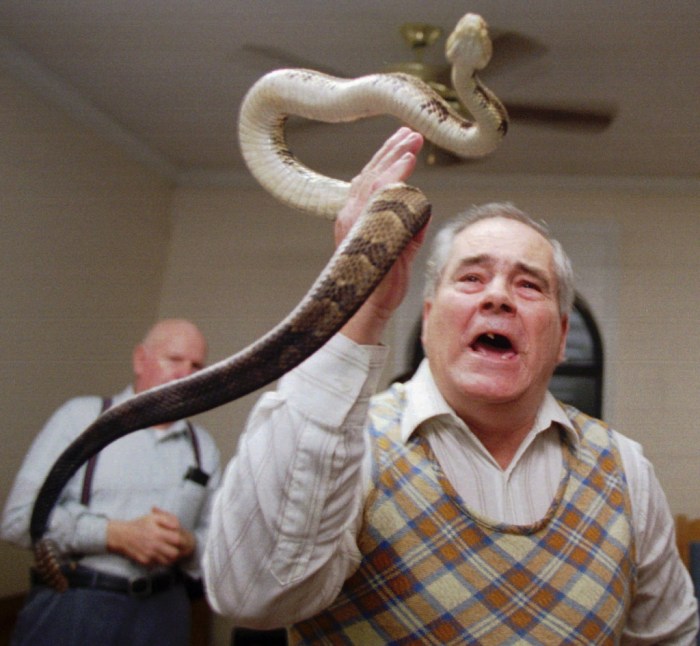
How to handle his snake yumi sin and fit kitty? Bringing together a snake and a cat can be a unique and rewarding experience, but it’s crucial to approach it with care and understanding. In this guide, we’ll delve into the fascinating world of snake and cat interactions, providing insights into their behaviors, creating a safe environment, and fostering supervised interactions.
Understanding the natural instincts and behaviors of both species is essential for success. We’ll explore potential triggers for conflict and provide practical tips for minimizing risks. By creating separate enclosures tailored to their specific needs, you can ensure their well-being and prevent escapes.
Snake and Cat Behavioral Analysis: How To Handle His Snake Yumi Sin And Fit Kitty
Snakes and cats are both predators with distinct natural behaviors and instincts that can influence their interactions. Understanding these behaviors is crucial for managing potential conflicts and ensuring a harmonious coexistence.
Snakes are solitary creatures with a keen sense of smell and vision. They primarily rely on ambush tactics to capture prey, using their venom or constriction to subdue their victims. Cats, on the other hand, are curious and playful animals with a strong hunting instinct.
They are known for their agility and stealth, often stalking and pouncing on their prey.
Triggers for Conflict
Several factors can trigger conflict between snakes and cats:
- Curiosity:Cats may be naturally curious about snakes, approaching them out of curiosity, which can startle or provoke the snake.
- Territory:Both snakes and cats are territorial animals. If a cat perceives a snake as a threat to its territory, it may become aggressive.
- Food:Snakes and cats may compete for the same food sources, such as rodents or small birds, leading to conflict.
Creating a Safe Environment

Ensuring the well-being of both snakes and cats requires providing separate enclosures that cater to their distinct needs. This not only minimizes the risk of accidents and escapes but also allows each species to thrive in an environment tailored to its natural behaviors and requirements.
Enclosures for Snakes
- Size and Dimensions:Enclosures should be large enough to allow snakes to move freely, explore, and engage in natural behaviors. The minimum recommended size is 2 feet long, 1 foot wide, and 1 foot high for smaller species, while larger snakes may require larger enclosures.
- Substrate:Provide a suitable substrate that mimics the snake’s natural habitat, such as aspen shavings, cypress mulch, or coconut fiber. Avoid using substrates that retain moisture, as they can lead to respiratory issues or scale rot.
- Temperature and Humidity:Maintain a temperature gradient within the enclosure to accommodate the snake’s thermoregulation needs. Use heat sources, such as under-tank heaters or heat lamps, and monitor the temperature regularly. Additionally, ensure adequate humidity levels by providing a humid hide or spraying the enclosure with water as needed.
- Hiding Places:Provide multiple hiding places, such as caves, tunnels, or enclosed areas, to give the snake a sense of security and allow it to retreat when needed.
- Water Bowl:Provide a clean water bowl large enough for the snake to soak in if desired.
Enclosures for Cats
- Size and Dimensions:Enclosures for cats should be large enough to provide ample space for movement, climbing, and play. A minimum size of 4 feet long, 2 feet wide, and 2 feet high is recommended.
- Vertical Space:Cats are natural climbers, so incorporate vertical space into the enclosure with cat trees, shelves, or ramps.
- Scratching Post:Provide a scratching post to encourage natural scratching behavior and prevent damage to furniture.
- Litter Box:Place a litter box in the enclosure and train the cat to use it regularly.
- Food and Water Bowls:Provide separate food and water bowls that are accessible to the cat at all times.
Preventing Escapes and Accidents
- Secure Enclosures:Ensure that enclosures are properly secured with locks or latches to prevent escapes.
- Supervise Interactions:If introducing cats and snakes to each other, do so under strict supervision and never leave them alone together.
- Regular Monitoring:Regularly inspect enclosures for any damage or loose fittings that could allow for escapes.
Supervised Interactions
Introducing a snake to a cat requires careful planning and supervision to ensure the safety of both animals. Gradual exposure and positive reinforcement are crucial to building trust and minimizing potential aggression.
Introducing the Snake
- Start by placing the snake in a secure enclosure within the cat’s environment, allowing the cat to observe the snake from a distance.
- Gradually increase the duration and proximity of the snake’s presence over time, while monitoring the cat’s reactions.
- Provide treats or praise to the cat when it shows calm behavior around the snake.
Introducing the Cat
- Once the cat has become accustomed to the snake’s presence, allow supervised interactions with a leash or harness on the cat.
- Keep the initial interactions brief and positive, gradually increasing the duration as the cat becomes more comfortable.
- If the cat shows signs of fear or aggression, immediately separate the animals and end the interaction.
Monitoring Interactions
- Supervise all interactions closely, watching for any signs of stress or aggression from either animal.
- Intervene immediately if the cat attempts to attack the snake or if the snake displays defensive behaviors.
- Use a barrier or other methods to separate the animals if necessary.
Importance of Gradual Exposure, How to handle his snake yumi sin and fit kitty
Gradual exposure allows both animals to adjust to each other’s presence and behavior, reducing the risk of negative interactions. By building trust and positive associations, supervised interactions can help create a harmonious coexistence between the snake and cat.
Training and Enrichment
Training both snakes and cats can greatly enhance their handling and interaction with humans. Training helps establish trust and communication, making it easier to care for and interact with these animals.
Training Exercises for Snakes
Target Training
Use a target stick or a food treat to guide the snake’s movements, teaching it to associate the target with a positive experience.
Yo, check this out! I’m handling my snake Yumi Sin and my fit kitty like a boss, but I’m also tryna up my insurance agent game. I found this dope article ( how to increase insurance agent productivity ) that’s gonna help me boost my sales and make me the king of the insurance world.
Plus, it’ll give me more time to hang with my furry and scaly buddies.
Handling Training
Okay, so I was just thinking about how to handle his snake Yumi Sin and fit kitty, but then I got to thinking about how to increase insurance agent productivity ( how to increase insurance agent productivity ) and I was like, “Wow, that’s a great idea!” So I’m going to go do that now.
I’ll let you know how it goes with Yumi Sin and kitty later.
Gradually increase the frequency and duration of handling sessions, allowing the snake to become accustomed to being picked up and held.
Clicker Training
Use a clicker to mark desired behaviors, such as calm movement or acceptance of handling, and reinforce them with treats.
Training Exercises for Cats
Litter Box Training
It’s not always easy to handle his snake Yumi Sin and fit Kitty, but it’s important to stay calm and collected. You can learn how to increase insurance agent productivity by clicking here . Just remember to keep your distance and use a long stick to move the snake.
If you’re feeling overwhelmed, don’t hesitate to call for help.
Introduce the cat to a litter box and reward it for using it.
Scratching Post Training
Provide a scratching post and encourage the cat to use it by placing treats or catnip on it.
Clicker Training
Similar to snake training, use a clicker to mark desired behaviors and reinforce them with treats or playtime.
Enrichment Activities
Enrichment activities provide both physical and mental stimulation, helping to prevent boredom and reduce stress.
Snakes
Provide hiding places, climbing branches, and a variety of substrate textures to encourage exploration and exercise.
Cats
Offer toys that stimulate their hunting instincts, such as feather wands or laser pointers. Create vertical spaces with cat trees or shelves to provide climbing and perching opportunities.
Emergency Preparedness

It is crucial to establish an emergency plan to ensure the safety and well-being of both your snake and cat in the event of an accident or emergency. This plan should include steps for handling snake bites, cat injuries, and accessing veterinary care and emergency assistance.
Snake Bites
If your snake bites you, it is essential to remain calm and seek medical attention immediately. Wash the bite area with soap and water and apply a cold compress to reduce swelling. Do not cut or suck the wound, as this can worsen the injury.
Cat Injuries
If your cat is injured, assess the severity of the injury and seek veterinary care if necessary. For minor injuries, such as cuts or scratches, clean the wound with soap and water and apply a bandage. For more severe injuries, such as broken bones or deep wounds, seek veterinary attention promptly.
Veterinary Care and Emergency Assistance
Before an emergency occurs, identify the nearest veterinary clinic and emergency animal hospital. Keep their contact information readily available in case of an emergency. Additionally, consider purchasing pet insurance to cover unexpected veterinary expenses.
Closing Summary

Remember, introducing a snake and a cat requires patience, supervision, and a commitment to their safety. By following these guidelines, you can create a harmonious coexistence where both your snake and cat can thrive. Embrace the challenge, and enjoy the unique bond that can form between these unlikely companions.
Query Resolution
Is it safe to keep a snake and a cat together?
Yes, it’s possible with proper precautions. Understanding their behaviors, creating a safe environment, and supervising interactions are crucial.
How do I introduce my snake to my cat?
Start with gradual exposure, keeping them separated initially. Supervise all interactions and use positive reinforcement to encourage calm behavior.
What are potential triggers for conflict between snakes and cats?
Prey drive, territorial instincts, and sudden movements can trigger conflict. Ensure both animals have adequate space, food, and enrichment to minimize these triggers.





